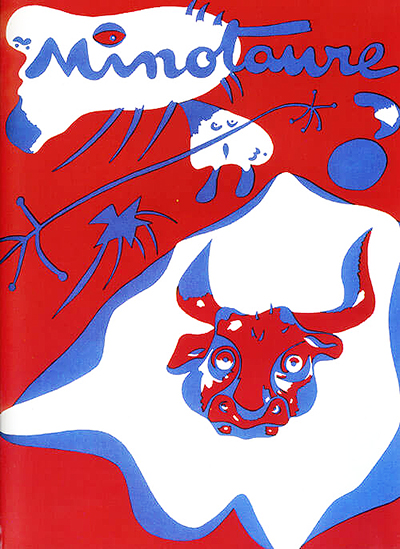This bright design was produced for the cover of an artistic journal, namely Minotaure. Miro created this whilst living in Paris in 1935.
This high quality publication featured artworks from Picasso and Ernst too, eventually becoming the official representative publication of the enture surrealist movement. It was previously a title called Le Surrealisme au service de la revolution but that had closed in 1933, being replaced immediately by this collective. Other notable names would also contribute theories and other text to the magazine, including Salvador Dali who discussed various colour combinations plus also Andre Breton. The French city appeared to be the centre for this movement, even though so many of its key contributors were from Spain, particlarly Catalonia. Max Ernst was of course German and this group drew together some of the finest modern artists from across the European continent.
There were also articles about art from the past as well as several delves into psycho-analysis which remained a key element of inspiration and intrigue for members involved in this group. With such a bold interest in variety, many of those involved were not only involved in surrealism during their own careers, with Picasso for example being famously skilled in other art movements such as Cubism as well as having an extended African period. Miro himself floated somewhere between abstraction and surrealism and also took on three-dimensional options through his successful run of sculptures. Boundaries were not something that any of these artists concerned themselves with.
The minotaur was a legendary creature featuring a man with the head of a bull and whilst this has inspired many artists from a whole variety of ages and movements, it would be particuarly relevant to Picasso and Miro because of their cultural links to bull fighting. They would also feature the bull in a number of other artworks including drawings and abstract posters. Whilst this sport continues to divide opinion, its importance to Spanish culture cannot be underestimated.




